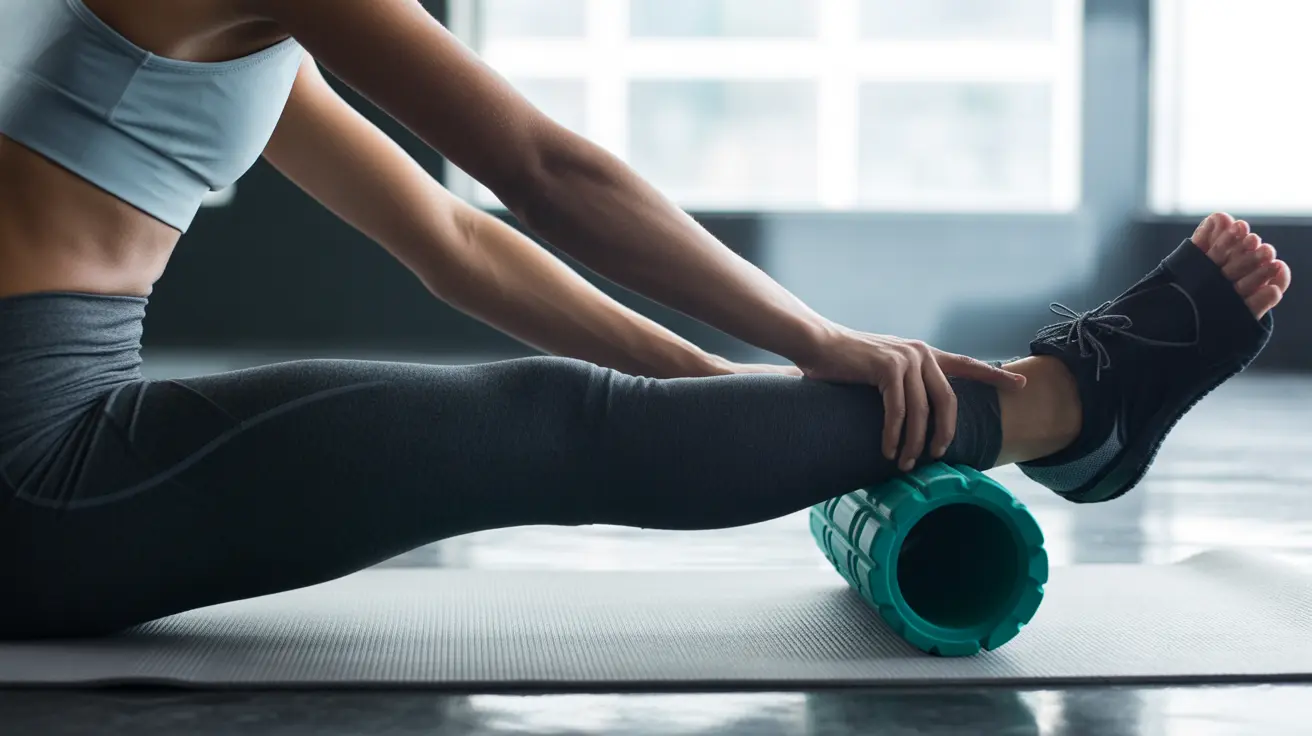Foam rolling has become an essential practice for athletes, fitness enthusiasts, and anyone seeking to improve their physical well-being. This self-myofascial release technique uses a cylindrical foam tool to apply pressure to tight muscles and fascia, helping to reduce tension, improve mobility, and enhance recovery after physical activity.
Understanding how to properly incorporate foam rolling into your routine can make a significant difference in your overall muscle health, flexibility, and workout performance. From reducing post-exercise soreness to preventing injury, foam rolling offers numerous benefits when performed correctly and consistently.
Understanding Foam Rolling and Its Mechanisms
Foam rolling works by applying sustained pressure to specific areas of muscle and connective tissue. This pressure helps break up adhesions and trigger points within the fascia - the thin layer of connective tissue that surrounds and supports muscles throughout the body. When fascia becomes tight or restricted, it can limit range of motion and contribute to muscle discomfort.
The mechanical pressure from foam rolling stimulates blood flow to the targeted areas, which can help deliver nutrients and oxygen while removing metabolic waste products. This process supports the body's natural healing mechanisms and can accelerate recovery between training sessions.
Research suggests that foam rolling may also influence the nervous system, potentially reducing the sensation of muscle tightness through neurological pathways. This combination of mechanical and neurological effects makes foam rolling a valuable tool for maintaining optimal muscle function.
Benefits for Muscle Recovery and Soreness Relief
One of the primary advantages of foam rolling is its ability to enhance muscle recovery following intense physical activity. Regular foam rolling sessions can help reduce the severity and duration of muscle soreness, allowing individuals to return to their training routines more quickly and with greater comfort.
The practice helps improve circulation in targeted muscle groups, which facilitates the removal of inflammatory compounds and metabolic byproducts that accumulate during exercise. This enhanced circulation can significantly reduce the lingering effects of muscle fatigue and promote faster healing of microscopic muscle damage.
Additionally, foam rolling may help maintain muscle length and flexibility during recovery periods, preventing the shortening and stiffening that often occurs after intense workouts. This maintenance of muscle quality can contribute to better performance in subsequent training sessions.
Impact on Flexibility and Range of Motion
Regular foam rolling can lead to measurable improvements in flexibility and joint range of motion. By addressing restrictions in the fascia and muscle tissue, foam rolling helps restore optimal movement patterns and can enhance performance in activities requiring mobility and flexibility.
Studies have shown that foam rolling can produce immediate improvements in flexibility that may last for several hours post-treatment. When combined with static stretching, foam rolling can create even more significant and lasting improvements in range of motion.
The technique is particularly effective for addressing common areas of tightness, such as the IT band, quadriceps, hamstrings, and calves. Regular attention to these areas can help prevent compensatory movement patterns that often lead to injury or decreased performance.
Addressing Delayed Onset Muscle Soreness (DOMS)
Delayed onset muscle soreness, commonly experienced 24-72 hours after intense or unfamiliar exercise, can be significantly reduced through strategic foam rolling. The technique appears to be most effective when performed both immediately after exercise and during the days following intense training sessions.
Research indicates that foam rolling may reduce the peak intensity of DOMS and shorten its duration. This reduction in soreness can help maintain training consistency and prevent the prolonged discomfort that often accompanies challenging workouts or new exercise programs.
The anti-inflammatory effects of foam rolling may play a key role in managing DOMS, as the technique helps promote healthy circulation and may influence the body's inflammatory response to exercise-induced muscle damage.
Essential Muscle Groups to Target
Effective foam rolling routines should focus on the major muscle groups that commonly develop tension and tightness. The quadriceps, located on the front of the thigh, are particularly important to address, especially for runners and cyclists who rely heavily on these muscles during activity.
The hamstrings on the back of the thigh, along with the glutes, form a crucial posterior chain that benefits significantly from regular foam rolling attention. These muscles often become tight from prolonged sitting and intense lower body training.
The iliotibial (IT) band, running along the outside of the thigh, requires special attention as it commonly becomes restricted and can contribute to knee and hip discomfort. The calves, including both the gastrocnemius and soleus muscles, should also be regularly addressed, particularly in individuals who spend long periods on their feet or engage in running activities.
Upper body areas such as the thoracic spine, latissimus dorsi, and quadratus lumborum can also benefit from foam rolling, especially for individuals who experience upper back tension or spend significant time in seated positions.
Safety Considerations and Proper Technique
While foam rolling is generally safe for most individuals, proper technique is essential to maximize benefits and prevent injury. Beginners should start with softer foam rollers and gradually progress to firmer densities as their tolerance improves.
It's important to avoid rolling directly over joints, bones, or areas of acute injury. The pressure applied should be firm but tolerable - excessive pressure can cause muscle guarding and may actually increase tension rather than reduce it.
Rolling speed should be slow and controlled, typically moving no faster than one inch per second. This allows adequate time for the tissue to respond to the applied pressure and helps prevent unnecessary discomfort.
Individuals with certain medical conditions, including severe varicose veins, blood clotting disorders, or acute injuries, should consult with a healthcare provider before beginning a foam rolling routine.
Optimal Frequency and Duration
The frequency of foam rolling can vary based on individual needs, training intensity, and recovery requirements. For general maintenance and injury prevention, foam rolling 2-3 times per week is often sufficient for most people.
Athletes or individuals engaged in intense training may benefit from daily foam rolling sessions, particularly focusing on areas that receive the most stress during their activities. Each muscle group typically requires 1-2 minutes of attention during a foam rolling session.
Pre-exercise foam rolling sessions should be brief and dynamic, focusing on preparing muscles for activity. Post-exercise sessions can be longer and more thorough, emphasizing recovery and tension release.
Frequently Asked Questions
What are the benefits of foam rolling for muscle recovery and soreness?
Foam rolling enhances muscle recovery by improving blood circulation, reducing muscle tension, and helping remove metabolic waste products from muscle tissue. It can significantly decrease post-exercise soreness, speed up recovery time, and help maintain muscle flexibility during rest periods. The practice also supports the body's natural healing processes by promoting better nutrient delivery to muscle tissues.
How often should I foam roll to improve flexibility and reduce muscle tightness?
For optimal flexibility improvements and muscle tightness reduction, foam rolling 2-3 times per week is recommended for general maintenance. Active individuals or athletes may benefit from daily sessions, particularly after intense training. Each muscle group should be addressed for 1-2 minutes per session, with consistency being more important than duration for achieving lasting flexibility gains.
Can foam rolling help with delayed onset muscle soreness (DOMS) after workouts?
Yes, foam rolling can significantly help with DOMS when performed both immediately after exercise and during the days following intense training. Research shows it can reduce the peak intensity of soreness and shorten its duration by promoting circulation, reducing inflammation, and helping clear metabolic byproducts that contribute to muscle discomfort.
Which muscle groups should I target when foam rolling for best results?
Focus on major muscle groups that commonly develop tension: quadriceps, hamstrings, glutes, IT band, calves, and the thoracic spine area. Pay particular attention to muscles you use most in your activities - runners should emphasize legs and calves, while desk workers should focus on hip flexors, IT bands, and upper back muscles. Target areas based on your specific activities and areas of tightness.
Is foam rolling safe for beginners and what are the key safety tips to follow?
Foam rolling is generally safe for beginners when proper techniques are followed. Start with a softer foam roller and gradually progress to firmer options. Apply moderate pressure - it should be uncomfortable but tolerable. Avoid rolling directly over bones, joints, or injured areas. Move slowly (about one inch per second) and never hold pressure on one spot for more than 30 seconds. Consult a healthcare provider if you have blood clotting disorders, severe varicose veins, or acute injuries.




